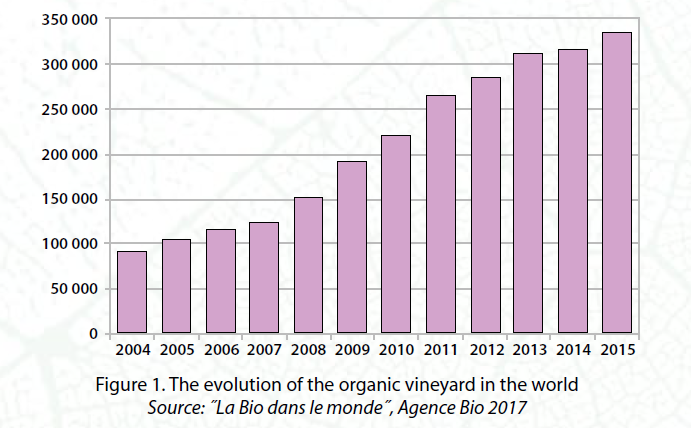
Copper sulfate use in organic vineyards: Are wine yeast and bacteria affected by this fungicide?
Publiée le 13/02/2020 14:32In 2017, the organic vineyard areas had tripled in 10 years and approximately 5% of worldwide vineyards are now under organic certifications. The growth is also reflected in consumer consumption of organic wines, not only in Europe but all over the world where in Sweden for example, the growth is 51%, in France 36%, and in Australia, 120%.
Introduction
Copper compounds, usually copper sulfate mixed with lime, have been used by grape growers since the late 1800’s to fight fungi and bacteria on vines. For organic growers, who cannot use other fungicide sprays, copper sulfate is still an effective tool against downy mildew. With the increased production of organic vineyards in the world, the use of this fungicide has also grown with this expansion.

Consequently it is possible to find this heavy metal to carry over from the vineyard to the cellar, during all stages of the vinification process.
The amount found varies. For example, if we compare a vineyard without any copper-based sprays, then the level of copper in the juice is likely to be less than 0.5 mg/L. If copper-based sprays are used, then the level of copper can vary depending on the number of applications, total dose applied and the time between the last application and harvest.
The copper content of the juice could therefore range from less than 1 mg/L to higher than 15 mg/L.
But it comes to winemaking, how does copper affect alcoholic fermentation and wine yeast? How does it affect malolactic fermentation and wine bacteria? And how can we protect the sensorial attributes of wine under high Cu concentration?
All these questions are answered to in the new Winemaking Update Organic Edition. To read it, please click here : WUP Organic Edition.
Abstract
Wine yeast and bacteria do not appear to be significantly affected by Cu concentrations higher than 15 mg/L, except in the case of malolactic fermentation in white wines, where concentration > 7.5 mg/L can impact the MLF. High pH and high Cu concentrations can impact wine yeast viability and lag phase. As Cu affects the plasma membrane of the yeast cell, it is good practice to protect it during rehydration with high sterols containing product (GoFerm™ range) and appropriate organic nutrition. Copper does impact some aromatic compounds such as thiols at low levels and some esters at higher concentration. Volatile acidity, which can alter the quality of wine is also affected by increased Cu concentrations, especially under high pH conditions. It is important to remember that other factors (pH, SO2, temperature, alcohol, etc) could interact with and increase the impact of copper on microoganisms.
Our selected wine yeast and bacteria can be used in organic winemaking and can help secure a complete fermentation while maximizing its sensory potential. More info on www.lallemandwine.com


